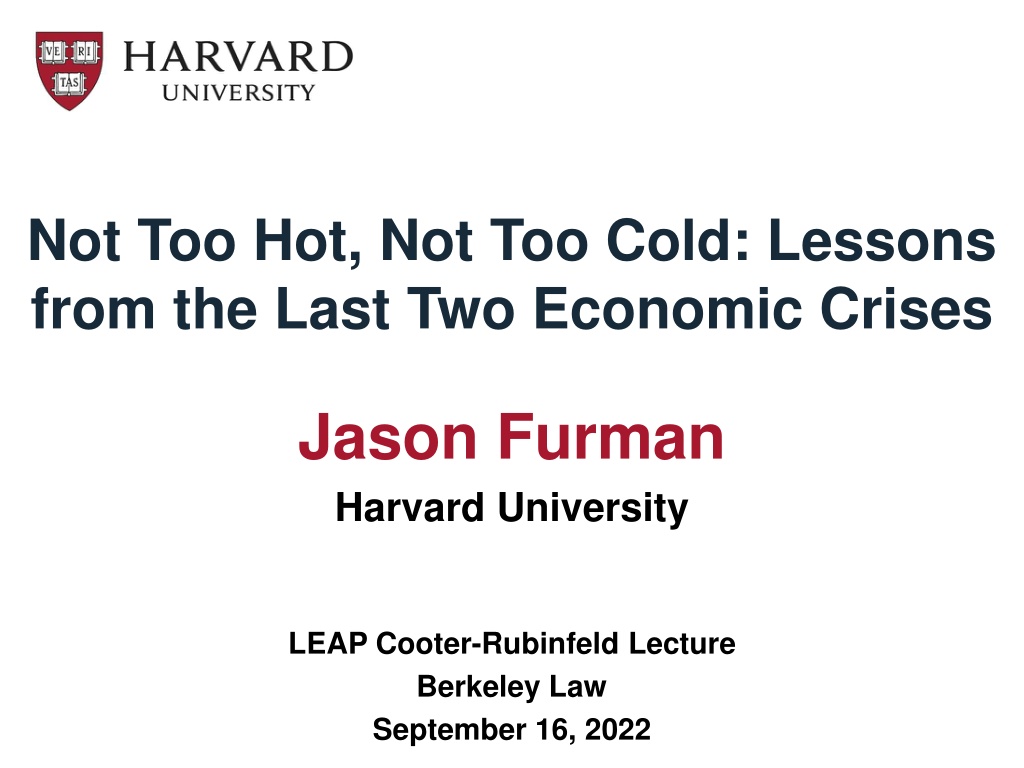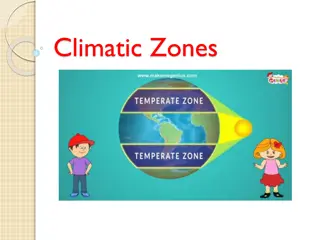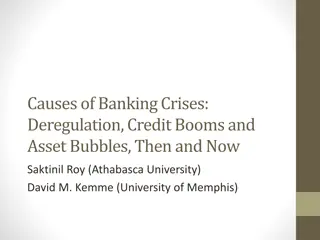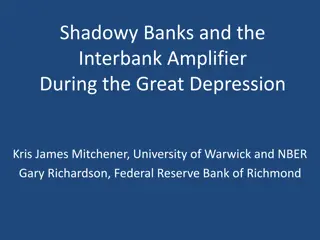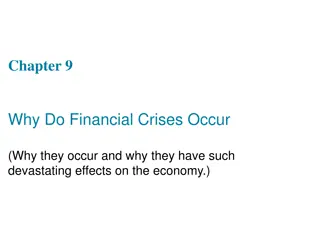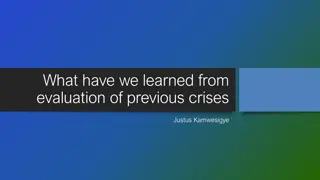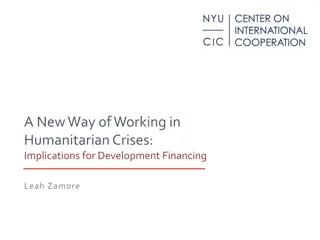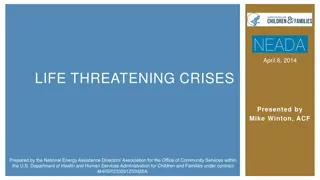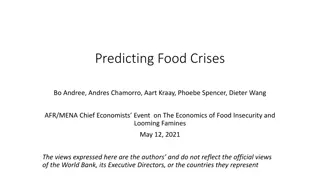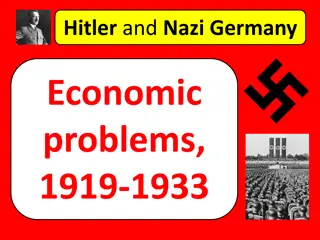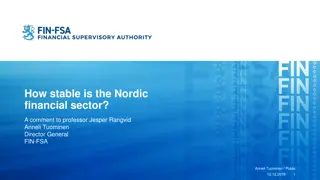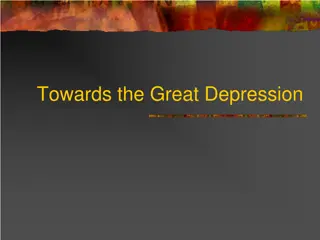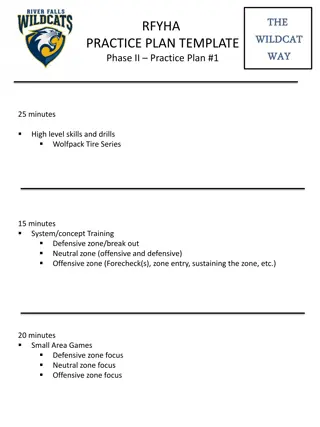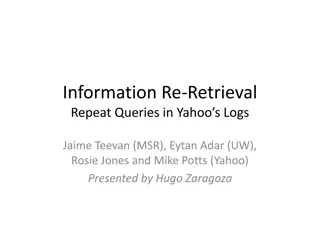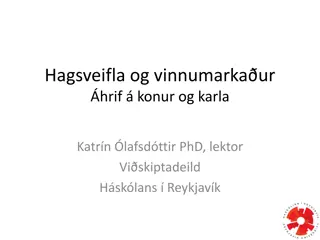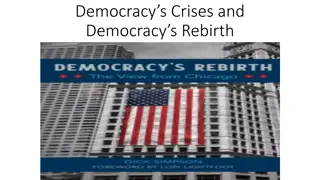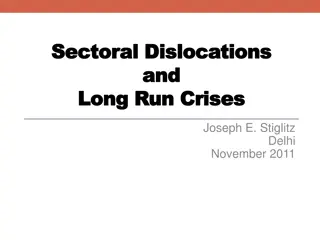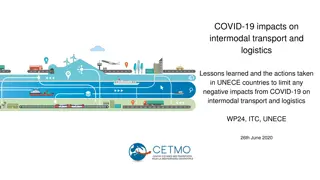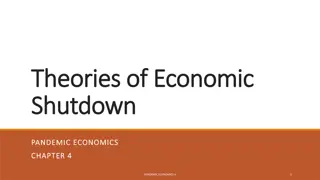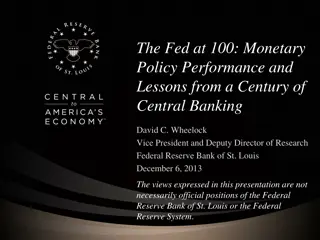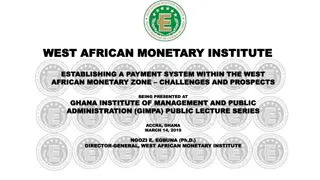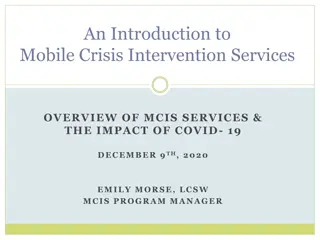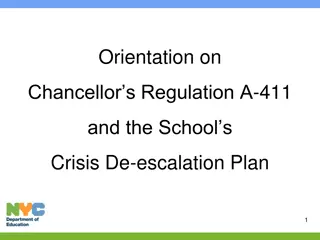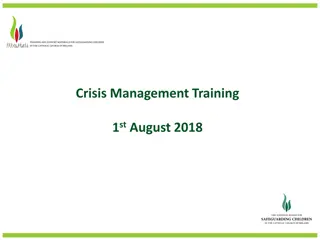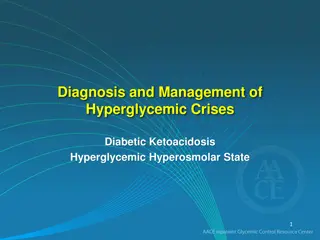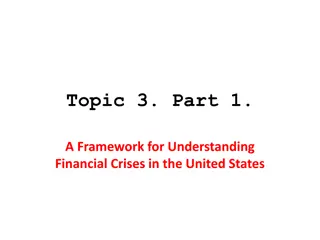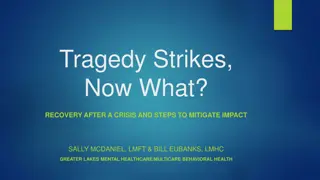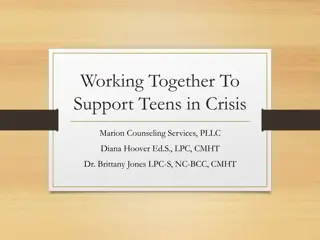Lessons from Economic Crises: Finding the Goldilocks Zone
Explore insights from the last two economic crises regarding unemployment, inflation, real wages, and income changes. Learn how finding the right balance between doing too little and doing too much is crucial in navigating economic challenges effectively.
Download Presentation

Please find below an Image/Link to download the presentation.
The content on the website is provided AS IS for your information and personal use only. It may not be sold, licensed, or shared on other websites without obtaining consent from the author. Download presentation by click this link. If you encounter any issues during the download, it is possible that the publisher has removed the file from their server.
E N D
Presentation Transcript
Not Too Hot, Not Too Cold: Lessons from the Last Two Economic Crises Jason Furman Harvard University LEAP Cooter-Rubinfeld Lecture Berkeley Law September 16, 2022
It is better to err on the side of doing too much not doing too little.
Outline 1.Facts 2.Interpretation 3.Too Little and Too Much Are Both Problems 4.Lessons on the Way to Goldilocks
Outline 1.Facts 2.Interpretation 3.Too Little and Too Much Are Both Problems 4.Lessons on the Way to Goldilocks
1. Facts Unemployment peaked much higher and recovered much faster than last time Unemployment Rate Percent 16 Business Cycle Starting Feb. 2020 14 12 10 Business Cycle Starting Dec. 2007 8 6 ? 4 2 0 -2 -1 0 1 2 3 4 5 6 7 8 9 10 Years Since Unemployment Rate Peak Source: Bureau of Labor Statistics; Macrobond.
1. Facts But inflation has risen much higher this time Consumer Price Index 12-month Percent Change 10 8 Business Cycle Starting Feb. 2020 6 4 2 0 Business Cycle Starting Dec. 2007 -2 -4 -2 -1 0 1 2 3 4 5 6 7 8 9 10 Years Since Unemployment Rate Peak Source: Bureau of Labor Statistics; Macrobond.
1. Facts Leading to large declines in real wages Real Median Wage Growth 12-month Percent Change 6 5 Business Cycle Starting Dec. 2007 4 Business Cycle Starting Feb. 2020 3 2 1 0 -1 -2 -3 -2 -1 0 1 2 3 4 5 6 7 8 9 10 Years Since Unemployment Rate Peak Source: Bureau of Labor Statistics; Federal Reserve Bank of Atlanta; Macrobond; author s calculations.
1. Facts Taxes and transfers cushioned the blow in 2010, while amplifying gains in the post-pandemic Change in Average Household Income for Working- age Adults, 2007 2010 Change in Average Household Income for Working- age Adults, 2019 2021 Percent Change Percent Change 25 25 Factor Income 20 20 15 15 Disposable Income 10 10 5 5 0 0 Factor Income -5 -5 -10 -10 Disposable Income -15 -15 Bottom 50% Middle 40% Top 10% Bottom 50% Middle 40% Top 10% Note: Working-age is 20-64. Source: Realtime Inequality (Blanchet, Saez, Zucman)
1. Facts Consumer sentiment was higher in the wake of the financial crisis University of Michigan Consumer Sentiment Index Index 110 Business Cycle Starting Feb. 2020 100 90 80 Business Cycle Starting Dec. 2007 70 60 50 August 2011 40 -2 -1 0 1 2 3 4 5 6 7 8 9 10 Years Since Unemployment Rate Peak Source: University of Michigan; Macrobond.
Outline 1.Facts 2.Interpretation 3.Too Little and Too Much Are Both Problems 4.Lessons on the Way to Goldilocks
2. Interpretation Bad luck in both cases Source: The Economist.
2. Interpretation Hypothesis 1 for the difference: Financial crisis vs. natural disaster Source: History.com; The Boston Globe.
2. Interpretation 2. Deep recessions result in lasting slowdowns in economic growth Percent Change Years After Shock Source: Adler, et al. (2017).
2. Interpretation Hypothesis 2 for the difference: Smaller vs. larger support Fiscal Stimulus as a Percent of GDP, 2008-2010 and 2020-2021 Percent of GDP 14 12 Automatic Stabilizers Discretionary Fiscal Stimulus 10 8 6 4 2 0 2008 2009 2010 2020 2021 Note: Calendar year. Source: Calculations based on Council of Economic Advisers (2014); Congressional Budget Office; Office of Management and Budget; Bureau of Economic Analysis; Macrobond.
2. Interpretation Fiscal support was vastly larger than justified by relief 2.5X the size of the income losses Disposable Personal Income per Capita Relative to 2018-2019 Trend 2020 Dollars per Capita 1,200 All Other Income 1,000 Net Government Transfers and Taxes Compensation of Employees Total Change in Disposable Personal Income 800 600 400 200 0 -200 -400 Jan-20 Apr-20 Jul-20 Oct-20 Jan-21 Apr-21 Jul-21 Oct-21 Note: Trends based on log-linear time trend and are constructed separately for each series. Source: Bureau of Economic Analysis; Macrobond; author s calculations.
2. Interpretation Relief was 4x the size of income losses in January-August 2021 Disposable Personal Income per Capita Relative to 2018-2019 Trend 2020 Dollars per Capita 1,200 All Other Income Net Government Transfers and Taxes Compensation of Employees Total Change in Disposable Personal Income 1,000 800 600 400 200 0 -200 Nov-20 Jan-21 Mar-21 May-21 Jul-21 Sep-21 Nov-21 Note: Trends based on log-linear time trend and are constructed separately for each series. Source: Bureau of Economic Analysis; Macrobond; author s calculations.
2. Interpretation Standard multiplier models predicted a huge increase in output Estimated Effect of December and March Fiscal Stimulus on Nominal GDP Billions of Dollars 26,000 2022:Q4 Standard multipliers 25,000 24,000 Low multipliers 23,000 CBO Jan-2020 Potential 2020 12 IHS Baseline 22,000 21,000 Actual 20,000 19,000 2019 2020 2021 2022 2023 Note: Normal multipliers based on CEA (2009, 2014); low multipliers based on CBO (2020). Source: Congressional Budget Office; IHS Markit; Council of Economic Advisers; Bureau of Economic Analysis, Macrobond; author s calculations.
2. Interpretation Also, monetary policy made repeated errors much later when data was much clearer Federal Funds Rate and Policy Rule Percent 10 8 6 4 Actual 2 0 -2 -4 Doveish Taylor Rule -6 -8 -10 -12 -14 2020 2021 2022
Outline 1.Facts 2.Interpretation 3.Too Little and Too Much Are Both Problems 4.Lessons on the Way to Goldilocks
3. Too Little and Too Much Are Both Problems Too little can scar a generation with prolonged periods of joblessness Source: Brookings.edu
3. Too Little and Too Much Are Both Problems As a result, too little can also result in cumulatively less output & employment Real Output Real Ouput (Log Scale) Potential New Potential Negative Hysteresis Actual Time
3. Too Little and Too Much Are Both Problems Is too much a problem? 1. Base case is a temporary employment gain for a permanent inflation loss and cumulative could lose out if a hard landing
3. Too Little and Too Much Are Both Problems The canonical case: equal output/employment losses needed to make up for the overshoot Real Output Real Ouput (Log Scale) Scenario 1: Equal overshoot and undershoot Potential Time
3. Too Little and Too Much Are Both Problems A hard landing (e.g., due to increased inflation expectations or mismanagement) > overshoot Real Output Real Ouput (Log Scale) Scenario 1: Equal overshoot and undershoot Scenario 2: Hard Landing Potential Time
3. Too Little and Too Much Are Both Problems Is too much a problem? 1. Base case is a temporary employment gain for a permanent inflation loss and cumulative could lose out if a hard landing 2. Welfare gains from above-NAIRU employment may be smaller than the losses of additional below-NAIRU employment 3. Marginal assistance may contribute much more to inflation than output 4. Real wages may be countercyclical 5. The public s subjective assessment may be different from the economist s assessment Inflation illusion Weighting of different parts of the distribution 6. May undermine the ability to do more in the future Higher inflation less room for monetary policy Higher debt less room for fiscal policy Political constraints
Outline 1.Facts 2.Interpretation 3.Too Little and Too Much Are Both Problems 4.Lessons on the Way to Goldilocks
Not Too Hot, Not Too Cold: Lessons from the Last Two Economic Crises Jason Furman Harvard University LEAP Cooter-Rubinfeld Lecture Berkeley Law September 16, 2022
United States has fared comparatively well in recent recessions in terms of GDP Real GDP vs. Trend, 2019Q4 Percent Difference from Trend Real GDP vs. Trend, 2007Q4 Percent Difference from Trend 5 5 United States Canada 0 0 United States Japan France -5 FranceGermany -5 United Kingdom Canada -10 -10 Japan Italy Italy Germany -15 -15 United Kingdom -20 -20 -25 2019Q4 -25 2007Q4 2020Q4 2021Q4 2022Q4 2008Q4 2009Q4 2010Q4 Note: Trend is based on log-linear regression using eight quarters ending 2007Q4 and 2019Q4 respectively. Average of real GDP and real GDI for the United States Source: Organisation for Economic Co-operation and Development via Macrobond; author s calculations.
But relatively poorly in terms of employment Change in Employment Rate Since 2007Q4, Age 25-54 Percentage Point Change Change in Employment Rate Since 2019Q4, Age 25-54 Percentage Point Change 4 4 Germany 2 2 Canada Japan Germany France France Japan 0 0 United Kingdom United Kingdom -2 -2 Italy Canada Italy -4 -4 United States United States -6 -6 -8 -8 -10 2007Q4 -10 2019Q4 2008Q4 2009Q4 2010Q4 2020Q4 2021Q4 2022Q4 Source: Organisation for Economic Co-operation and Development via Macrobond; author s calculations.
U.S. core inflation has been much faster than other countries Core Consumer Price Inflation vs. Dec. 2019 Percent Difference from December 2019 14 Jul-22 United States 12 United Kingdom 10 8 Canada 6 4 France Germany 2 Italy 0 -2 Japan -4 Jan 19 Jul 19 Jan 20 Jul 20 Jan 21 Jul 21 Jan 22 Jul 22 Note: Seasonally adjusted for France, Germany, Italy, Japan, United Kingdom, and United States using Macrobond. HICP for United States with estimate 2022. Source: Statistics Canada; Eurostat; Japanese Statistics Bureau, U.K. Office of National Statistics; Bureau of Labor Statistics; Macrobond; author's calculations.
The underlying state of demand is dramatically different in the United States than elsewhere Nominal Output Relative to Trend, 2022:Q2 Percent Difference From Trend 6 5 4 3 2 1 0 -1 -2 -3 France Japan United Kingdom Germany Italy United States Note: Pre-pandemic trend based on log-linear regression for 2018Q1 to 2019Q4. Average of GDP and GDI for the United States. Source: Organisation for Economic Co-operation and Development; Bureau of Economic Analysis; Macrobond; author's calculations.
Hypothesis 2 (cont): Smaller vs. larger support across countries Social Benefits to Households in 2020 Relative to Trend Percent of 2019 GDP 5 4 3 2 1 0 -1 Japan GermanyEuro area France Italy United Kingdom United States Note: Trend social benefits spending based on average growth rate for 2018 and 2019. Source: Organisation for Economic Co-operation and Development; author's calculations.
